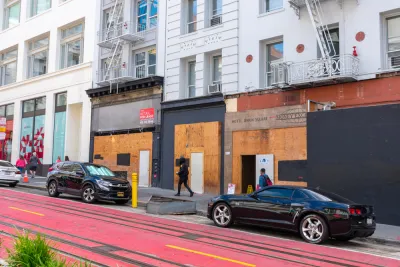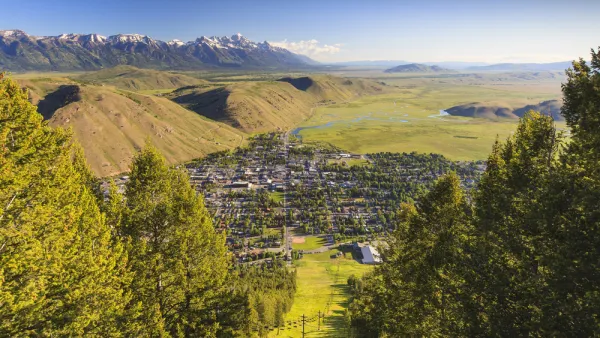New Census data break down San Francisco’s population losses during the first year-plus of the pandemic by race and age.

The early months of the pandemic were rife with stories about urban dwellers decamping to more suburban and rural climes, reinvigorating real estate markets around the country, sending waves of new residents to small towns, and driving up housing costs in so-called "zoom towns." Though a number of studies have been released in the ensuing years revealing the reality of out-migration to be much more complicated than of the headline-friendly version of the Covid-19 “urban exodus.”
Some cities did lose population, however, including San Francisco, which lost a decade’s worth of population growth in a year [paywall]. According to a paywalled article by Susie Neilson in the San Francisco Chronicle, detailed data from the U.S. Census Bureau now makes it possible to get very specific about the demographics of the city’s population loss.
Quoting the headline of the story, here’s the “exact type of person who was most likely to leave San Francisco in the pandemic”: white and young.
“The data shows that young people in general were more likely to leave the city. The city lost about 20% of all residents age 25 to 29 over this time and 15% of those 20 to 24,” according to Nielson.
“These findings make intuitive sense. People in their twenties and early thirties in San Francisco are far less likely to own homes than older adults, making it both harder to afford the city and easier to leave it,” adds Nielson.
The article includes an infographic laying out the population trends by race and age cohort between April 2020 and July 2021. At the other end of the spectrum, moving into the city, are white and Asian people over the age of 70.
FULL STORY: Here is the exact type of person who was most likely to leave San Francisco in the pandemic

National Parks Layoffs Will Cause Communities to Lose Billions
Thousands of essential park workers were laid off this week, just before the busy spring break season.

Retro-silient?: America’s First “Eco-burb,” The Woodlands Turns 50
A master-planned community north of Houston offers lessons on green infrastructure and resilient design, but falls short of its founder’s lofty affordability and walkability goals.

Delivering for America Plan Will Downgrade Mail Service in at Least 49.5 Percent of Zip Codes
Republican and Democrat lawmakers criticize the plan for its disproportionate negative impact on rural communities.

Test News Post 1
This is a summary

Test News Headline 46
Test for the image on the front page.

Balancing Bombs and Butterflies: How the National Guard Protects a Rare Species
The National Guard at Fort Indiantown Gap uses GIS technology and land management strategies to balance military training with conservation efforts, ensuring the survival of the rare eastern regal fritillary butterfly.
Urban Design for Planners 1: Software Tools
This six-course series explores essential urban design concepts using open source software and equips planners with the tools they need to participate fully in the urban design process.
Planning for Universal Design
Learn the tools for implementing Universal Design in planning regulations.
EMC Planning Group, Inc.
Planetizen
Planetizen
Mpact (formerly Rail~Volution)
Great Falls Development Authority, Inc.
HUDs Office of Policy Development and Research
NYU Wagner Graduate School of Public Service





























